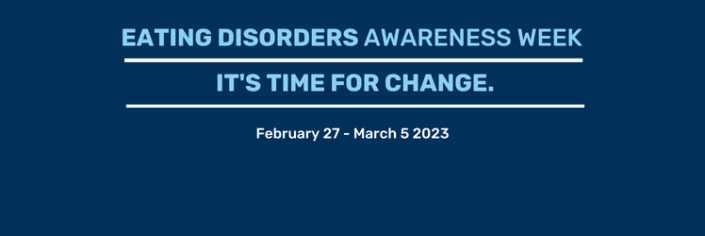As someone who attended a public high school, health education was a really valuable class to me. While some may have considered it a joke of a class or an “easy A,” tackling topics like substance abuse, domestic violence/abusive relationships, obesity, and mental illness are extremely relevant to teens today. Now, seven years after my freshman health class and six years in eating disorder recovery with an almost-completed bachelor’s degree in psychology, I realize my health class maybe did not do the best job at expressing what it is truly like to live with an eating disorder and why it’s important we learn about these topics. Here are a few things I’d like to implement if I had the chance to change my alma mater’s health curriculum.
1. Stay up to date with eating disorder-related news.
Information on eating disorders is constantly expanding. New research is being conducted every day to discover the causes of eating disorders, potential cures, and prevention techniques. It’s important that when teaching students, you consult the professionals in the field of your subject matter. Even in one of my college courses, I had a professor lecture about obesity, which is not an eating disorder recognized by the DSM-V, under the eating disorder unit. By using updated research, modern textbooks, and recently-published articles, students won’t be misinformed in regards to eating disorders and will be retaining the best information possible.
2. Enforce information on treatment and recovery options as often as information on symptoms and diagnostic criteria.
I feel as if most lessons on eating disorders in health class focus on learning about individual disorders and their symptoms, but there is a great lack of information on treatment options. Teachers should also be incorporating the differences in treatment facilities (hospitalization vs. inpatient housing vs. intensive outpatient programs) and a variety of intervention techniques that aid eating disorder recovery. By making this information accessible to students, you’re not only educating them, but may also provide them with information that could save a friend, a family member, or even their own life.
3. Feature diverse individuals who are living with these illnesses in the curriculum.
Almost every video I watched on eating disorders in health class features a white, straight, teenage girl suffering from either anorexia or bulimia. This enforces harmful stereotypes that eating disorders are specific to a certain gender or ethnicity, which is entirely untrue. Eating disorders do not discriminate against any population. It is important that students are able to find content that displays people like themselves, whether it be people of color with eating disorders, men, women, and non-binary folk, or people of the LGBTQIAP+ community who struggle with body image, in order for them to fully understand the scope of these illnesses.
4. When using film and media to accompany education, attempt to show multiple different experiences.
As stated before, not only do most of the visual additions to health classes exclude diverse populations, but they also are lacking in variety within eating disorders themselves (and that doesn’t even scrape the surface of how little media representation disorders like BED and ARFID receive in general). These videos often end as the teen is first starting to accept their illness and seek help, which miss the opportunity to tell the stories of those in recovery and working to manage their disorder. The characters in these “educational videos” are often used in a way that fails to reflect the endless complexities of suffering from and attempting to recover from an eating disorder. In addition to receiving a diagnosis, we need to talk about how different types of treatment are beneficial. We need to discuss maintenance and relapse. Education should focus on the entirety of life with an eating disorder, not just one stage that doesn’t always represent everyone.
5. Seek out guest speakers to share their own stories.
Listening to a survivor share their story in class can encourage students to relate to the content in a more personal way. It helps people understand that these disorders affect those in their own lives, which may encourage more empathy, less stigma, and a desire for further knowledge. Personally, I’ve been doing presentations in my home school district for four years now and always find it to be a successful way to teach students more about these sensitive issues while also providing them with a way to connect classroom teaching to their own lives.
Health education is a really wonderful resource for students to learn more about everyday issues that may affect themselves and the people in their community. I find it to be a great place for me to begin my education of social issues, but I feel there is always room for improvement. In a field of study that is constantly growing, we need to account for that increased knowledge in academia as well. Rather than just teaching the basics, educators should also be focused on accurately portraying individuals afflicted by eating disorders and giving their students the opportunity to apply the classroom content to their own lives.
The NEDA Educator Toolkit is a resource for educators and staff who work in a school setting or those who work with youth outside of school. If you want to understand more about eating disorders, or if you’d like to know how to support students and young people who may be affected, this information will help you.
Emma Giordano is a 21-year-old New York-based psychology student aiming to become a mental health counselor. She is a YouTuber at youtube.com/emmmabooks who primarily talks about books but also utilizes her platform to encourage discussion about mental health.






